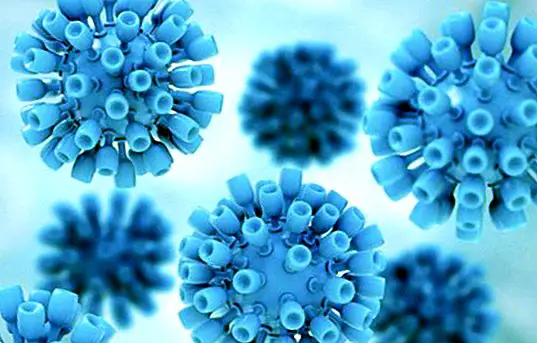Chikungunya or Chikunguña: what it is, symptoms, causes and treatment
Yesterday we knew the confirmation by the Spanish health authorities of what has become the first detected case of the chikungunya virus (or chikingunya virus), which was registered last July in Gandia (Valencia), and became in fact the first case of autochthonous contagion that takes place within our country as it is known that the patient - a 60-year-old man was infected in Spain after not having traveled abroad in the last three months.
Therefore, both the Ministry of Health and the Valencian Community have applied the surveillance protocol before the expansion of the mosquitoes that cause and are involved in the transmission of the disease, mainly Aedes aegypti and Aedes albopictus (more popularly known as tiger mosquitoes).

The disease is present mainly in Africa and Asia. However, as early as December 2013, the first cases of indigenous transmission of the chikungunya virus in the Americas (more specifically in the Caribbean), and now the one registered in Spain, were confirmed. The first case was described for the first time in 1953 in Tanzania, while shortly after it was discovered that it was an endemic disease in Africa.
What is chikunguña or chikungunya?
It consists of one disease caused by a virus of the same name which is transmitted by the bite of an infected mosquito (usually the variety of tiger mosquito, Aedes aegypti and Aedes albopictus).
Precisely, the name that acquires this disease means "He who bows", because it describes the inclined appearance that the infected person usually has due to the different muscular and joint pains that the virus tends to cause. In fact, in the Makonde language -Tanzania and Mozambique- chikungunya means "dry up" or "squirm".
It is a virus that belongs to the group of known as arboviruses, which consist of a type of virus that is only transmitted by arthropod bites.
In fact, for the tranquility of many, It is a virus that does not spread from person to person, so that the outbreaks appear in an isolated way due exclusively to the appearance of the different specific mosquitoes that transmit it.
The symptoms of chikungunya
We can establish a series of main symptoms that appear after the transmission of the virus, starting 3 to 7 days after the bite of the mosquito and then present a duration of 7 days, after which the patient's total recovery occurs although in some people it is possible that the pain of the joints continue for a few more months.

The most common and usual symptoms are the following:
- Fever, especially elevated with joint pain. It appears especially suddenly being greater than 38.5 degrees, it could last between 2 to 3 days.
- Muscle and joint pain They last a few days.
- Headache, with the possibility of general malaise, nausea and a lot of tiredness.
- Inflammation of the joints (arthritis) in feet and hands.
- Red or purple spots with itching that appear on the skin.
What are the causes of chikungunya or chikungunya?
The main and unique cause is the chikungunya virus, which is only transmitted by the tiger mosquito. This means that it can only be transmitted by arthropod bites, and can not be spread from person to person.
There are two mosquitoes that can transmit it: the Aedes aegypti and the Aedes albopictus, more popularly known as tiger mosquitoes, belonging to the family of todaviridae.
Unlike most mosquitoes that bite at dusk or at night this particular type itches especially during the day. And it transmits it when it bites a person previously affected by the virus, conserving it in its digestive system during a time that is unknown. Then it bites another human being and injects the virus into his bloodstream, from where it is finally distributed throughout the body.
Once this happens, it causes a reaction of an immunological nature, producing many substances and toxins that favor the correct immune response capable of eliminating the virus. That is why the infectious viral picture arises that the person suffers so spectacularly, with high fever and inflammation and pain of the muscles and joints.

How is it diagnosed?
The diagnosis is difficult especially if we take into account that its clinical manifestations are in fact very nonspecific, since there are no characteristic symptoms that make the medical specialist suspect that the disease is being suffered.
For confirmation of the disease, tests that detect the responsible virus should be requested, for example with a blood test that performs a serological study using the ELISA technique (in the search for antibodies against the virus), as well as other altered parameters may be indicative of the presence of an infection.
Treatment of chikungunya or chikunguña
The medical treatment that is administered only helps to alleviate the symptoms, so that one only waits until the own defenses of the body of the patient are able to eliminate the virus. That is, it is a treatment that relieves discomfort, and does not eliminate the virus. For example, analgesics are administered to reduce fever and pain.
Further, there are no vaccines against this type of virus Today. This article is published for informational purposes only. It can not and should not replace the consultation with a Physician. We advise you to consult your Trusted Doctor. ThemesInfections


